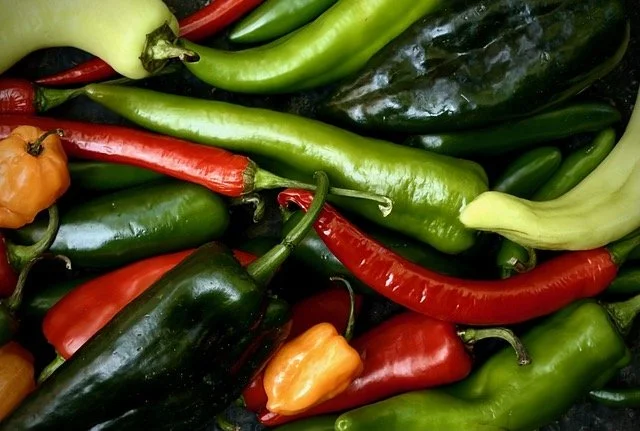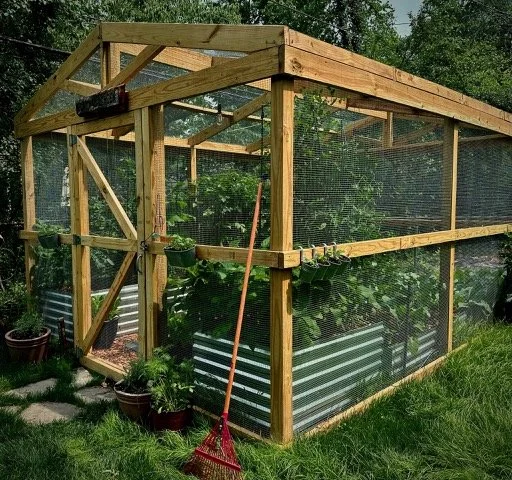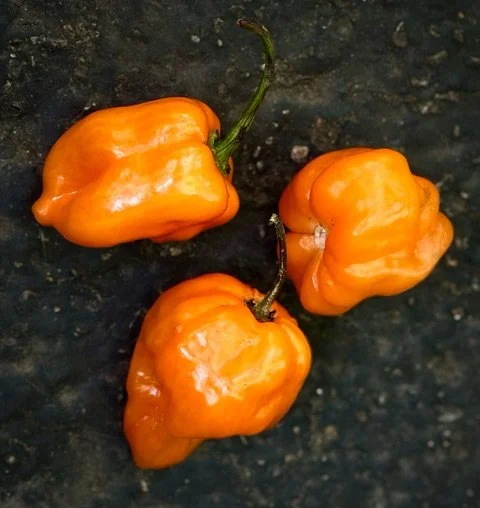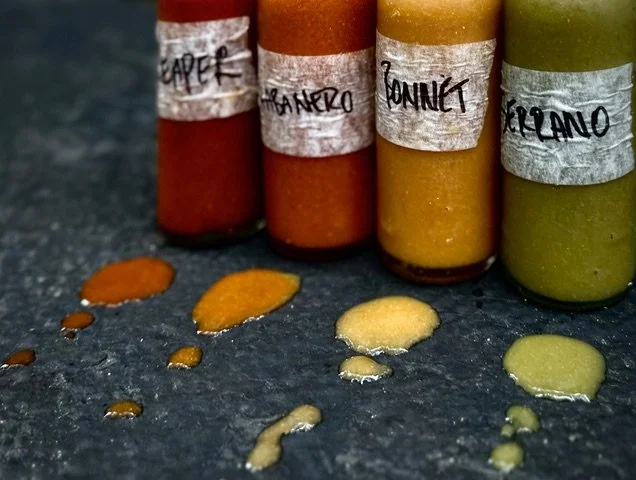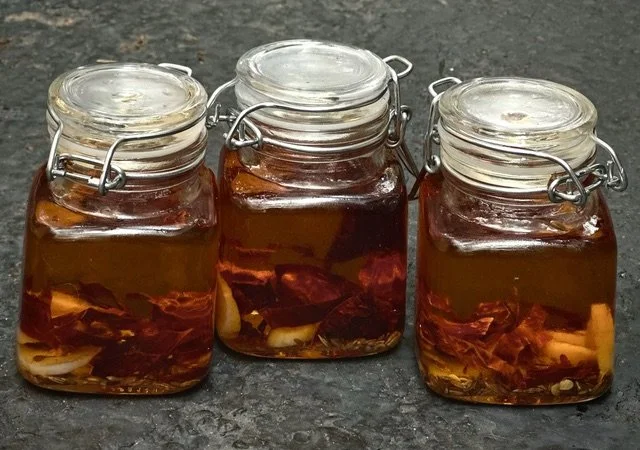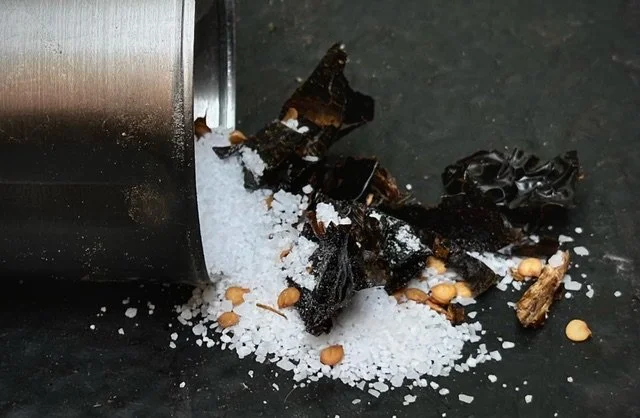Turning Up the Heat: How I Outsmarted Garden Pests This Summer
Summer is my season for garden experimentation. I test ideas, push boundaries, and observe what thrives and what fails. Every trial, regardless of the outcome, teaches me something that helps shape the vision for next year’s harvest.
I can work with that—at least with the things I can control.
But the small critters and insects treating my garden like a 24-hour snack bar refuse to get on board. I’ve tried common repellents-like hot pepper sprays, pepper flakes, and neem oil. They work-but only until it rains, keeping my garden a popular neighborhood all-you-can eat destination.
This year I made big changes. Tackling pests is the top priority and I used a layered approach that included new menu items, creative barriers, and strategic companion planting.
Changing up the menu
In my accessible spaces, I planted onions, leeks, shallots, and chives—all things critters hate. But the signature move was stationing a slew of screaming hot peppers among them. There’s enough Scoville Units in the garden to make them rethink dinner. If the smell doesn’t get them, the first bite certainly will.
I went with a wide range of heat: mild Anaheim and Hungarian wax (500 to 15,000 Scoville units) medium jalapeños and poblanos (2,500 to 8,000) and heat heavy varietals like serranoes (10,000 to 23,000), cayenne (30,000 to 50,000), and habaneros and scotch bonnets (100,000 to 350,000). I even planted a ghost pepper (hovering around 1 million), and one bigshot: the Carolina Reaper, which can hit 2.2 million Scoville units. They’re the ones that win contests, by setting fire to novelty hot sauces, salsas and stews.
The problem is that my strategy led to another problem. I have more capsicum than any sane person needs, which has me in a fiery dilemma—pun intended.
But this is also where things get interesting.
Chefs are programmed to use everything or store it for later. But once the recipes are covered and the freezer’s full, it’s time to get inventive. After all, croutons, yogurt, and marmalade were born from excess bread, milk, and oranges. So why not chili peppers? I accepted the challenge and got to work.
A NOTE ABOUT SCOVILLE UNITS
Scoville Units measure the pungency level of capsicum, the compound that gives peppers their heat. The scale was invented in 1912 by pharmacologist Wilbur Scoville using a dilution method. Today, High Performance Liquid Chromatography (HPLC) separates and quantifies the heat-producing compounds and measures each of them to assign a score. You can check out global pepper rankings at www.scoville.org.
Setting boundaries
Hot peppers alone aren’t doing all the heavy lifting. I backed them up with a few structural changes too.
I relocated the summer jewels—tomatoes, cucumbers and zucchini—to a secure, fully enclosed spot that’s surrounded by chicken wire from top to bottom. There’s no more tunneling possible, and they’ve learned this restaurant is no longer taking walk-ins. As for the lettuce, kale and carrots, they went in my tallest pots, which kept them mostly bunny-free.
Utilizing nature’s good guys
The last step was adding flowers and herbs in the beds, loaded with strong odors and chemical compounds those moochers find unappealing. The marigolds, nasturtiums, lavender, and calendula add a beautiful splash of color while also attracting pollinators. Dill, mint, basil, sage, and rosemary help fend off the four-legged critters, but also slugs, beetles, aphids, mites, hornworms, and cabbage moths. It also lets me bypass purchasing fresh herbs for several months.
The critters might not appreciate the updated menu, but I certainly do. I got another season of researching and testing techniques like dehydrating, pickling, and learning to make hot sauces, infused oils and chili salts. But it’s ok, I’m not complaining, because experimenting is what summers are all about.
Recipes & Preservation Tips
Dehydrating Tips
Peppers can be dehydrated in the oven (170–200°F for 1–3 hours), in a dehydrator (125–140°F for 8–12 hours), or air-dried over several weeks. Once dry, they’re perfect for chili salts and flakes or rehydrated for use in sauces.
Freezing Tips
Freeze fresh or charred, whole or chopped. Wash, dry, and remove stems, then freeze in a single layer before transferring to containers. If charring, cool completely before freezing.
To char: Roast over an open flame, turning often, until blistered evenly. Place in a bowl covered with plastic wrap to steam for 15 minutes. Peel, cool, and freeze.
Basic Hot Sauce
Hot sauces can either be fermented or quick-cooked. This recipe is not fermented and can be used right away. The fermented versions take longer but can have a shelf life of a year or more. (Adapted from UC Agriculture & Natural Resources)
4 cups chopped hot peppers (serrano, cayenne, jalapeño, scotch bonnet)
5 cloves garlic, chopped
½ cup chopped onion
1 teaspoon salt
1½ cups vinegar (white or apple cider)
½ cup water
2 teaspoons sugar
Simmer all ingredients until peppers soften. Let cool, blend until smooth (beware the fumes!), strain, and pour into sterilized jars. Refrigerate for up to two weeks.
Quick Pickle
Quick pickling is convenient because you get a finished product in a matter of hours. Simply wash the vegetables and place them in a sanitized jar with a lid. Prepare the liquid and pour it over the vegetables. Great on sandwiches, pizza, salads, nachos or as a taco ingredient.
2 cups sliced hot peppers
1 cup white vinegar
1 cup water
1 tablespoon sugar
2 teaspoons kosher salt
Optional: garlic, coriander, mustard seeds, herbs, peppercorns
Place the sliced peppers in a clean dry jar. Bring remaining ingredients to a boil, stir to dissolve the salt and sugar. Pour the brine over clean vegetables leaving ½ inch space at the top. Cool to room temperature, cover and refrigerate.
Infused Oil
Infused oils are a rich smokey condiment that can be enjoyed as a dip or drizzled over pizza, vegetables or noodles. Oils made with fresh peppers last around a month, while dried peppers have the advantage of a longer shelf life. To increase the heat, add more peppers or break them into smaller pieces.
1 cup neutral oil (grapeseed or avocado)
2–3 dried or fresh peppers (or more), broken into pieces
Optional: garlic, herbs, peppercorns
Heat oil and chilis in a saucepan until shimmering but not smoking. Cook for 3 to 5 minutes, stirring once or twice, do not boil. Remove from heat and cool. Pour into a clean, dry jar either strained or intact if desired and seal. Leave dried pepper oils at room temperature and refrigerate oils with fresh peppers.
Chili Salts
Chili salts have a long shelf life and make good use of hot peppers. Heat can be adjusted by varying the ratio of salt to peppers. Use them on a cocktail rim, sprinkle on meats, or dust over chocolates to give your dessert a kick.
1-3 dried or fresh peppers such as jalapeño, cayenne, or ghost, stems removed
½ cup kosher or flaked sea salt (or more)
Optional: cumin seed, coriander seed
Grind peppers with half the salt using a mortar and pestle or small food processor to desired texture. Dried peppers can be stored for up to 1 year.
For fresh peppers, spread the mixture across a parchment-lined sheet tray for 2 to 3 days, raking regularly until fully dried. Store in an airtight container for up to six months.
Side bar
Hot Pepper Safety Tips: Handle with Care!
Follow these safety tips while handling hot peppers to prevent chemical burns caused by capsicum.
Wear Gloves
Always use food-safe disposable gloves protect your skin. Capsaicin can linger and burn long after prep.
Don’t Touch Your Face
Especially your eyes, nose, or mouth! It only takes a tiny trace to cause a serious sting.
Use a Dedicated Cutting Board
Or wash thoroughly after use. Capsaicin can hang around and transfer to other foods.
Wash Tools with Hot Soapy Water
Anything that encounters peppers should get a full scrub down afterwards which includes knifes, peelers, grinders and blenders.
Beware the Fumes
Roasting or blending hot peppers (especially dried ones) can release spicy vapor. Be sure to ventilate the kitchen, wear a mask, or even better, take it outside.
Protect Your Eyes
If you're preserving large batches or using super-hots like ghost peppers or Carolina Reapers, consider eye protection too.
Keep Dairy Nearby
Capsaicin is fat-soluble, making water useless for extinguishing the heat. Keep milk, yogurt, or sour cream on standby to cool off any accidental over tasting.
For Burns
Soak the affected skin in cold milk or yogurt. Seek medical advice if it doesn’t resolve quickly.

